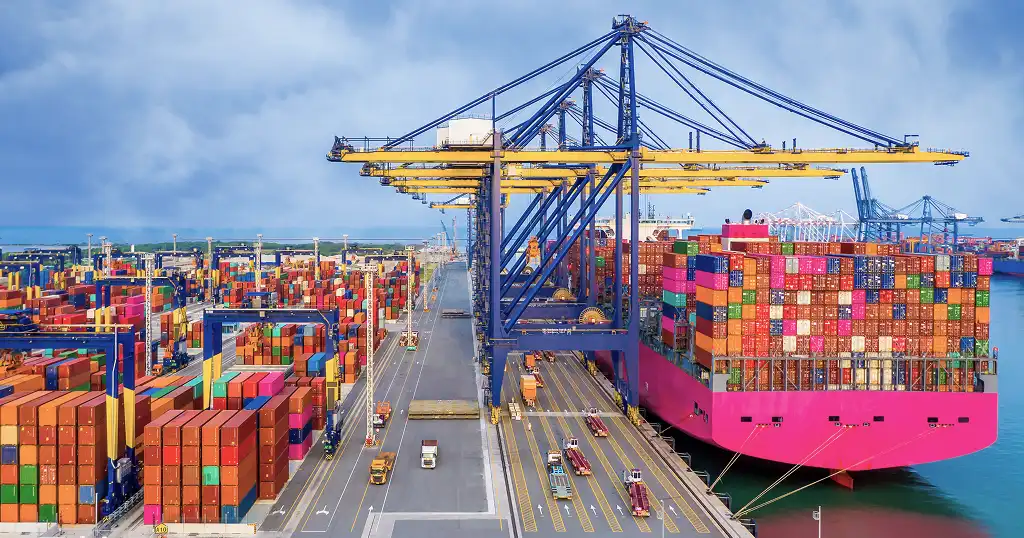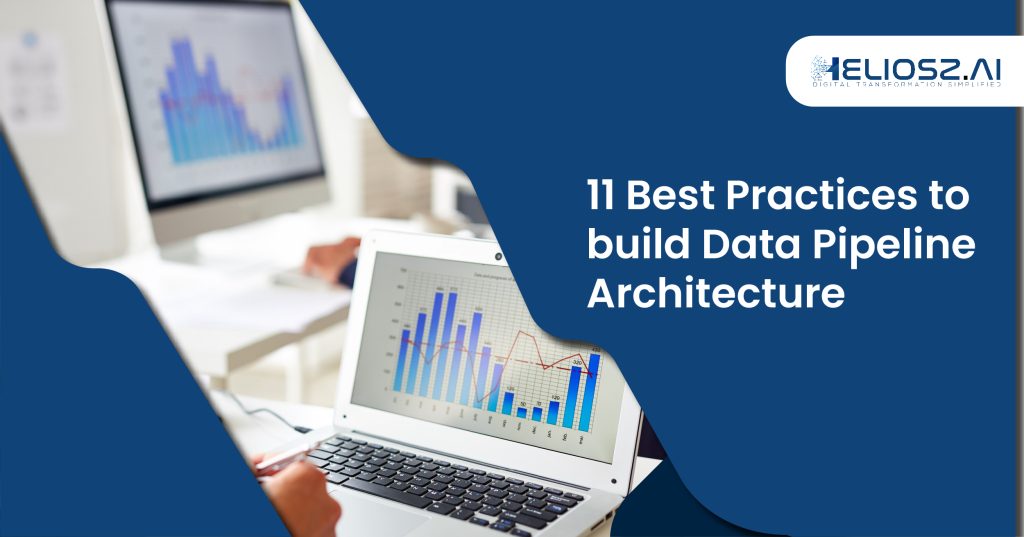Data pipeline architecture in the digital age is the driving force behind the proper management and analysis of data. Many, if not all, businesses mainly from different spheres rely on the data pipeline architecture functioning to transfer data away from its start to its destination, being that it is the right treatment on the way.
Besides, these pipelines are determined to be the main head of the data-driven decision-making process, which generates the idea that the data visualization is secured through the pipelines beside what is right on the human end.
With the help of these pipelines, organizations perform the decision-making process. They do so by obtaining the necessary information, constructing the scenarios and implementing these in their businesses.
Let’s discuss more about data pipeline structure and the best practices you need to consider for the successful development of data pipeline architecture in this informative article.
Table of Contents
- What is a Data Pipeline Architecture?
- Types of Data Pipeline Technologies
- 11 Best Practices of Data Pipeline Architecture
- 1. Data Quality Assurance and Validation
- 2. Scalability and Flexibility
- 3. Robust Error Handling and Monitoring
- 4. Security and Compliance
- 5. Metadata Management
- 6. Modularization and Reusability
- 7. Cost Optimization
- 8. Performance Optimization
- 9. Testing and Deployment
- 10. Change Management
- 11. Documentation
- 10 Popular Tools for Data Pipeline Architecture
What is a data pipeline architecture?
Data pipeline architecture is an organized form designed to make the passage of data from various sources to target systems where it can be analyzed, stored, or used easier. The whole thing, from the naming and bringing in the data to the analysis and end phase of it, constitutes the data pipeline architecture.
The data pipeline remote data processing procedures and the tools and technologies utilized for achieving them are commonly referred to as the data pipeline architecture. To improve the speed and efficiency of data processing, hybrid architectures that combine on-premises and cloud-based systems are often used in data pipeline designs.
The structure is a collection of the steps and installations required to pull out, operate, and furnish the data. There are various types of data pipeline technologies which include those that are used for different operations and needs. These are the 4 most important ones.
Types of Data Pipeline Technologies
1. ETL Data Pipeline Architecture
An ETL (Extract, Transform, Load) data pipeline architecture extracts data from various sources, transforms it for quality and structure, and loads it into a data warehouse. This is ideal for scenarios needing extensive data transformation before storage.
2. ELT Data Pipeline Architecture
In an ELT (Extract, Load, Transform) data pipeline architecture, data is extracted and loaded into a data warehouse or lake, with transformations done within the target system. This approach leverages the processing power of modern data warehouses for large data volumes.
3. Batch Data Pipeline Architecture
The batch data pipeline architecture processes data in scheduled intervals. Data is collected, transformed, and loaded periodically, suitable for scenarios like end-of-day reporting where real-time processing isn’t needed.
4. Streaming Data Pipeline Architecture
Streaming data pipeline architecture handle data in real-time, providing immediate analysis and results. Data is continuously collected and processed for applications that require instant insights, such as real-time monitoring and fraud detection.
11 Best Practices of Data Pipeline Architecture
A properly designed data pipeline is the basis of every data-based company. It guarantees that data from various sources will reach the target point smoothly and thus deliver significant insights and wise decision-making. The establishment of good practices is the major factor for driving the pipeline to become robust, efficient, and scalable.
1. Data Quality Assurance and Validation
Data quality is crucial in data pipeline architecture. Conduct data profiling to gain an understanding of how data behaves by identifying the existence of anomalies, inconsistencies, and missing values.
Employ data cleansing strategies to manage the problems, this may include altering the data structure so as to have only correct inputs in a uniform way.
The data can be made even more useful and extensive by inputting the relevant outer data into the main content. Automated data quality checks at different stages of the pipeline are helpful to catch errors early on, in addition to profiling your data.
These may include checks against data type consistency, range checking, and presence as per format.
2. Scalability and Flexibility
A flexible data pipeline architecture accommodates varying data volumes. Horizontal scaling, load balancing, and partitioning optimize resource utilization.
Caching frequently accessed data accelerates processing. Consider autoscaling mechanisms to dynamically adjust resources based on workload fluctuations. Implementing queueing systems can buffer incoming data to handle spikes in load.
Besides autoscaling mechanisms, make use of containerization (Docker for example), as well orchestration tools such as Kubernetes to efficiently handle and scale data pipeline components. This also makes your pipeline more portable and flexible.
3. Robust Error Handling and Monitoring
A resilient data pipeline architecture gracefully handles errors. Implement comprehensive error logging, including timestamps and error types, for effective troubleshooting.
Employ retry mechanisms with exponential backoff for transient errors. Circuit breakers prevent cascading failures. Real-time monitoring of pipeline metrics, such as latency and throughput, is crucial. Establish alerts for critical issues, enabling prompt responses.
Conduct root cause analysis to prevent recurring problems.
4. Security and Compliance
Protecting sensitive data in data pipeline architecture is vital. Introduce strong encryption, access control, and data protection to ensure the information is protected. Comply with regulations in the industry such as GDPR, CCPA or HIPAA.
Through frequent inventory of the security systems and application of the necessary updates, continually address and resist all new threats that emerge regularly.
5. Metadata Management
Effective metadata management is essential for data pipeline architecture. Maintain a centralized metadata repository, capturing details about data sources, formats, and transformations. Data lineage tracking helps trace data flow and provenance. Regularly update metadata to reflect changes in data.
6. Modularization and Reusability
Breaking down the data pipeline architecture into modular components enhances maintainability and flexibility. Consider a microservices architecture for independent components. Promote code reusability through shared libraries and functions. Utilize configuration management to isolate pipeline parameters.
7. Cost Optimization
Optimize resource utilization with data pipeline architecture to reduce costs. Leverage cloud providers’ cost-saving features like spot instances and reserved instances. Implement data compression to minimize storage and transfer costs. Automate resource scaling based on workload to avoid overprovisioning.
8. Performance Optimization
Prioritize pipeline performance within data pipeline architecture for timely insights. Identify performance bottlenecks through profiling and monitoring. Optimize data transformations, reduce I/O operations, and leverage parallel processing. Consider caching frequently accessed data for faster retrieval.
9. Testing and Deployment
Thorough testing is crucial for data pipeline architecture reliability. Implement unit, integration, and end-to-end tests. Employ continuous integration and continuous delivery (CI/CD) pipelines for automated testing and deployment.
While initiating CD/CI in your software dev pipeline, make sure that before your tests your testing environment is the same as production as much as possible.
10. Change Management
Manage changes to the data pipeline architecture effectively. Implement a change management process with version control and impact assessment. Conduct thorough testing before deploying changes.
11. Documentation
Clear and comprehensive documentation is essential for knowledge sharing and troubleshooting. Document pipeline architecture, data flow, components, and processes. Maintain up-to-date documentation to reflect changes. Do remember to add examples, and real-life case studies on how various capabilities can be applicable in different industries, preferable to pipeline design, choosing the right application, and using project organization.
10 Popular Tools for Data Pipeline Architecture
The selection of an optimal tool necessitates a meticulous evaluation of factors such as the scale and complexity of the data pipeline architecture, the desired level of control, the required processing engine, and the integration with existing infrastructure. Here are the top 10 best data pipeline tools in the market now.
- Apache Kafka
- Apache Airflow
- Talend
- Apache NiFi
- Informatica
- AWS Glue
- Google Cloud Dataflow
- Streamsets
- Microsoft Azure Data Factory
- Databricks Delta Lake
Now Get Started to Build Some Data Pipelines Architecture Smartly with Heliosz!
Equipped with insights into best practices and a comprehensive overview of popular tools, you are ready to design and implement data pipelines that meet your organization’s unique requirements. Remember, the goal is to build pipelines that are not only efficient and reliable but also adaptable to future needs.
As you embark on this journey, envision your data pipeline as a dynamic ecosystem that fosters innovation and facilitates informed decision-making. With a robust pipeline architecture, the possibilities are endless—transform your data into a catalyst for success and a driving force behind your organization’s future achievements.






























